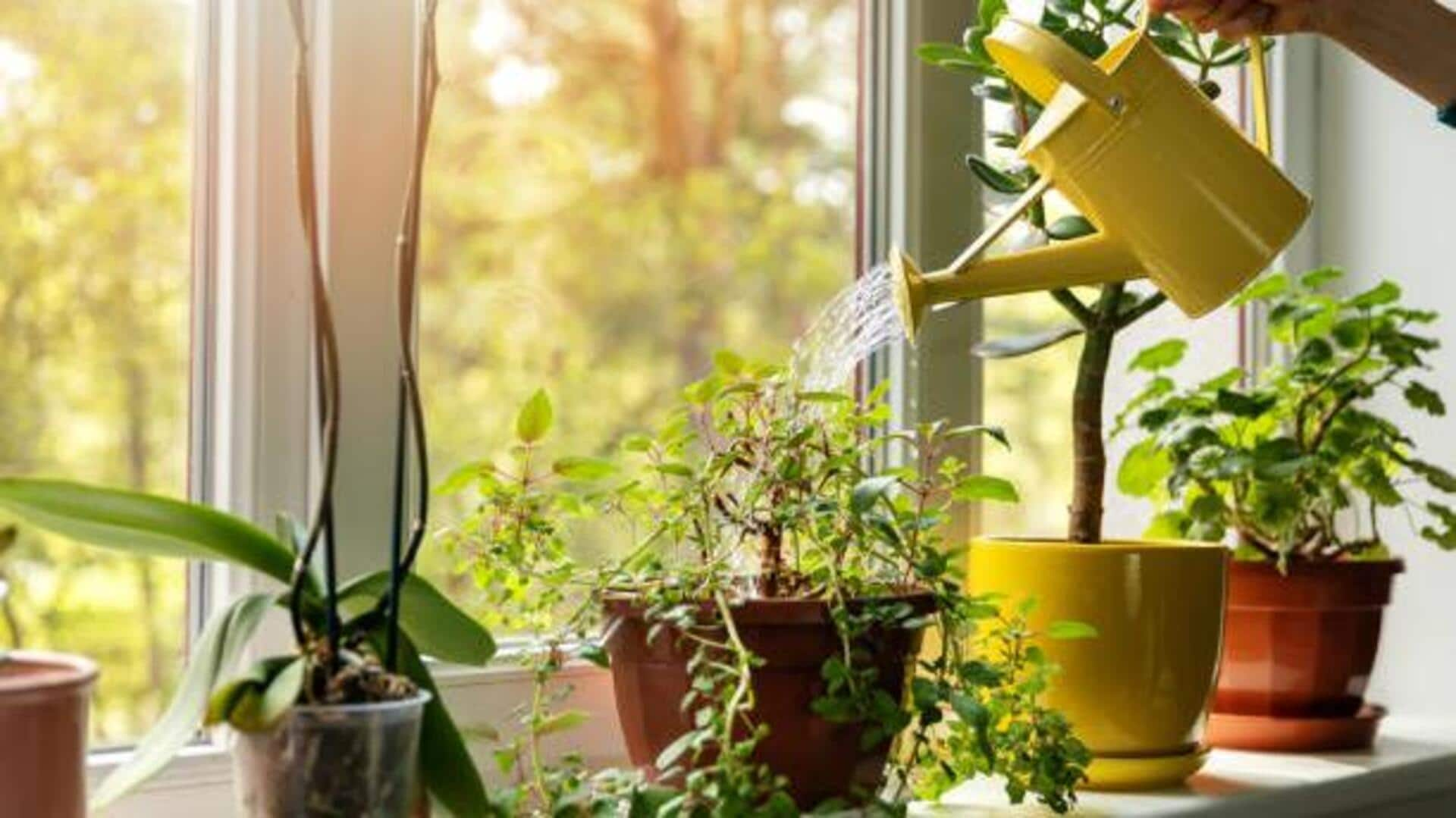
How to prevent overwatering in houseplants
What's the story
Overwatering is perhaps the biggest mistake that can cause the death of your beloved plants. Knowing the signs and indicators of overwatering can help you keep your greenery healthy. In this article, we discuss some practical tips to prevent overwatering so that your plants can thrive. By knowing these indicators, you can modify your watering habits and give your plants the ideal environment to flourish.
Soil check
Check soil moisture levels
One of the easiest ways to prevent overwatering is to check soil moisture levels. Stick your finger about an inch deep in the soil; if it feels dry, it's time to water. If it's still wet, wait a few more days before watering. This technique helps ensure that you're not adding extra water when the plant doesn't need it.
Leaf observation
Observe leaf color and texture
Leaves can tell you a lot about a plant's health. Yellowing leaves or those with a mushy texture often indicate overwatering. Healthy leaves should be vibrant in color and firm in texture. Regularly inspecting leaf condition allows you to adjust watering practices before any significant damage occurs.
Drainage check
Monitor drainage efficiency
Proper drainage is critical to avoid overwatering problems. Make sure your pots have sufficient drainage holes and that excess water can flow out easily. If water collects at the bottom of the pot or takes too long to drain, try repotting with better-draining soil or changing pot position.
Moisture meter use
Use moisture meters for accuracy
For the precise souls out there, moisture meters are an excellent tool to keep a check on the moisture levels of your soil. These devices give you real-time data on how much moisture is present in the soil, allowing you to decide when it's time to water again - without any guesswork whatsoever.
Seasonal adjustment
Adjust watering frequency seasonally
Plants' watering needs also vary with seasons. In cooler months, you can reduce watering frequency as evaporation rates decrease significantly compared to warmer months. More frequent hydration may be required due to increased evaporation rates from heat exposure outdoors or the usage of heating systems indoors during wintertime conditions, respectively.